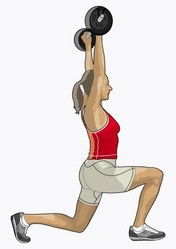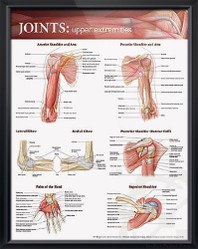
Squats
by health
The Squat is universally recognized as a key weight training exercise. Requiring balance and coordination, it blasts your legs and gives your gluteus maximus a focused workout.
Squats For A Firmer Butt
You have the four major muscle groups (quadriceps, hamstrings, gluteals and erector spinae) to thank for most of your running, jumping, lifting, hitting and throwing ability. The muscles of your hips and upper legs provide the force needed to propel you forward or upward, and the positioning of your hips plays a critical role in how much force you can apply in throwing and hitting.
There's also a universal high regard for firm glutes and well-proportioned thighs. Men and women alike admire this portion of the human anatomy, so for aesthetic reasons alone, it's a good idea to invest in a well-rounded muscle-development routine.
The muscles of the buttocks operate with the hamstrings to extend the hip joints. This area is the seat of power and strength, hence the squat is the prime glutes exercise. The Gluteals are a muscle group like any other and will respond to progressive resistance exercise by growing, not spreading. So you won't be widening your butt by performing squats. If anything your buns will be tighter and more defined. And suffice to say, more desired.
Although primarily used to develop the legs it is touted as being a very good exercise for the back and glutes. In this exercise the barbell is placed on the shoulders and the back is held in the normal lordotic (arched) position to support the weight. Step under a barbell that's positioned on a rack and let it rest across the back of your shoulders and trapezius. Holding on to the bar to balance it, raise it off the rack as you step back into the starting position. With your feet positioned slightly wider than hip width and your gaze directed upward, bend your knees and descend until your thighs are parallel to the ground.
Now rise upward, keeping your head up and your back straight. To allow for a continuous contraction of your quadriceps, stop just short of standing fully erect. Do not lean too far forward or squat beyond parallel.
The two most common squatting errors are leaning too far forward (hyperextending places an incredible strain on the lower back and can cause severe squeezing of the disks) and going too deep into the squat and bouncing the weight back up (a quick and easy method of damaging the knees and injuring the lower spine). With very heavy weights, you should definitely wear a lifting belt and possibly knee wraps to protect yourself from injury. Squats are a great exercise if you do them right. But if done incorrectly, squats can be your worst enemy.
Make sure they're a part of your regular weight training regime or work them into your exercise program, and squat your way to a firmer butt.




 Your rash and itching problems may be Scabieson 03/10/2013
Your rash and itching problems may be Scabieson 03/10/2013
 Tickson 11/06/2011
Tickson 11/06/2011
 Vitamin Kon 10/10/2011
Vitamin Kon 10/10/2011
 Vitamin Eon 10/10/2011
Vitamin Eon 10/10/2011


Comments